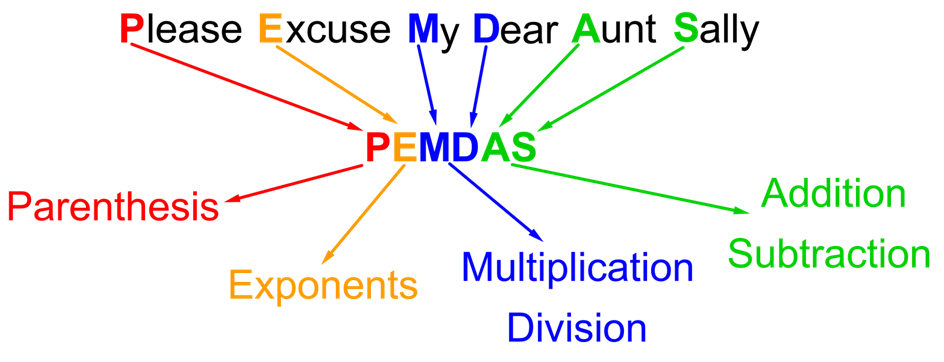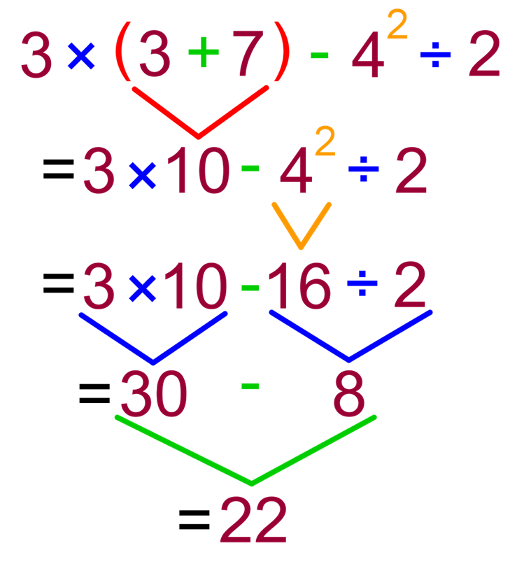What is PEMDAS?
Operations refer to adding, subtracting, multiplying and dividing in math. So what is PEMDAS and how does it relate to the order of operations?
PEMDAS is actually a memory aid to help you remember the order of which you should carry out operations. You can also use the phrase "Please Excuse My Dear Aunt Sally" to help you remember how PEMDAS is spelled. In certain parts of the world, PEMDAS is also known as BEDMAS. Let's take a deeper look at the different components of PEMDAS.
What is the order of operations?

The "P" in PEMDAS stands for parentheses. It comes first in the acronym, reminding you that you should take a look at everything inside parentheses first (you may call them brackets, and therefore, some places use BEDMAS as the acronym instead).
The "E" in the acronym stands for exponents. This includes exponents and roots, so these should be tackled next. Then comes M and D, and these are a pair. "M" stands for multiply, and "D" stands for divide, but you can do either-or first. They both rank equally in the PEMDAS order. As long as you do them before "A" and "S", which stands for add and subtract. Adding and subtracting's order doesn't matter either, as long as it's all done last. Again, their rank is equal.
In general, when you're solving operations with PEMDAS, a good habit to have is to move from left to right. For example, if there's addition and subtraction in the question and the addition is more to the left, then do it before you do the subtraction.
If you calculate operations in the wrong order, you'll get the wrong answer. It's very important to pay attention and identify all the different operations you're working with so that you can correctly sort out their order. PEMDAS is actually what was agreed upon by mathematicians a long time ago in order to agree upon a consistent method to solve math problems.
How to do order of operations
Here's an example of the PEMDAS rule being used in math. Let's try out this question:

How do we attack this with the PEMDAS point of view? We know that the first thing we'll have to do is the parentheses. So we'll add 3 + 7, which is 10.
Now the question becomes:
Then comes the exponents. We have a exponent to the power of 2 on the number 4. Again, we'll solve this part of the question first before the others, giving us:
Division and multiplication are the next things we'll deal with. You can do these one by one, or just go through and do them at the same time. In this case, we'll do the , and . We now have:
For the last part of the question, we'll do addition and subtraction last. There aren't any additions to do, so we'll just minus 8 from 30. This gives us the final answer of 22.
A summary of the steps can be seen through this color coded image, which keep you focused on the PEMDAS rules.

Try out this online game that can test your understanding of the order of operations. If you also wanted a place to double check your answers for PEMDAS questions, you can use this nifty math equation solver.






